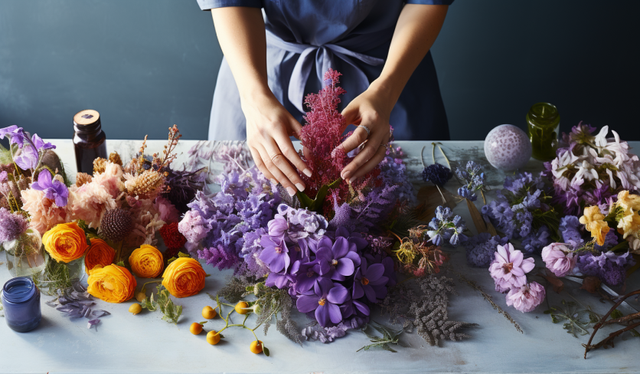Florists Innovations: Embracing Sustainability in Floral Design

Table of Contents
ToggleThe floral industry is undergoing a significant transformation as florists increasingly prioritize sustainability in their designs. With growing awareness of environmental issues, the demand for eco-friendly practices has never been more pronounced. From sourcing materials responsibly to utilizing innovative techniques, many professionals are adapting to create stunning arrangements that are not only visually appealing but also environmentally conscious.
Sourcing Locally Grown Flowers
One of the most impactful shifts in the floral industry is the emphasis on sourcing locally grown flowers. By partnering with nearby farms, florists reduce their carbon footprint associated with transportation. Local sourcing also supports regional economies and ensures fresher products, enhancing the overall quality of floral arrangements.
In addition to supporting local farmers, many florists are opting for organic flowers that are cultivated without harmful pesticides or chemicals. This practice not only benefits the environment but also promotes healthier ecosystems. By choosing organic blooms, consumers can enjoy beautiful arrangements while contributing to sustainable agricultural practices.
Innovative Packaging Solutions
Another key area where sustainability is making strides is in packaging. Traditional floral packaging often includes plastic wraps and foam, which are detrimental to the environment. In response, many florists are exploring innovative alternatives that are biodegradable or recyclable.
For instance, some businesses are using kraft paper, which is both sustainable and aesthetically pleasing. Others are turning to reusable containers that can be returned and refilled. This shift not only reduces waste but also encourages customers to engage in eco-friendly practices, fostering a sense of community around sustainability.
Dried and Preserved Flowers
The trend of using dried and preserved flowers is gaining traction among florists seeking to minimize waste. These materials offer a long-lasting alternative to fresh blooms, enabling consumers to enjoy beautiful arrangements for months or even years. Dried flowers can be used in various designs, from wreaths to bouquets, providing a unique aesthetic that appeals to many.
Moreover, the process of drying flowers often requires fewer resources than cultivating fresh blooms. By utilizing this method, florists can contribute to a more sustainable industry while offering customers innovative and timeless pieces.
Eco-Friendly Floral Foam Alternatives
Floral foam has long been a staple in the floral industry, aiding in the arrangement and support of flowers. However, traditional floral foam is made from petroleum-based plastics, which are not biodegradable and contribute to pollution. In response to this issue, many florists are seeking eco-friendly alternatives.
Innovative products such as coconut coir, moss, and biodegradable foam are becoming popular substitutes. These materials provide similar support and aesthetic appeal without the environmental drawbacks. By adopting these alternatives, florists can enhance the sustainability of their arrangements while maintaining the integrity of their designs.
Sustainable Design Techniques
In addition to sourcing and materials, florists are also embracing sustainable design techniques. This involves utilizing every part of the plant to minimize waste. For example, flower stems that might typically be discarded can be repurposed in smaller arrangements or used in composting.
Furthermore, many florists are designing arrangements that celebrate seasonal blooms. By aligning their designs with the natural growing cycles, they reduce the need for energy-intensive greenhouse cultivation. Seasonal arrangements not only reflect the beauty of nature but also encourage consumers to appreciate the environment and its rhythms.
Community Engagement and Education
Sustainability in the floral industry is not solely about practices; it also encompasses community engagement and education. Many florists are taking the initiative to inform their customers about the importance of sustainable practices. Workshops, events, and social media campaigns are effective ways to raise awareness and promote eco-friendly choices.
By fostering a dialogue around sustainability, florists can inspire consumers to make informed decisions about their floral purchases. Educated customers are more likely to appreciate the value of sustainably sourced flowers and innovative designs, leading to a broader cultural shift towards environmental responsibility.
In Conclusion, The evolution of the floral industry is marked by a commitment to sustainability, with florists at the forefront of this movement. By sourcing locally, embracing innovative packaging solutions, utilizing dried and preserved materials, and adopting eco-friendly practices, the industry is paving the way for a more responsible future. As consumers become increasingly aware of the environmental impact of their choices, the demand for sustainable floral design will undoubtedly continue to grow, encouraging florists to innovate and adapt in this dynamic landscape.





